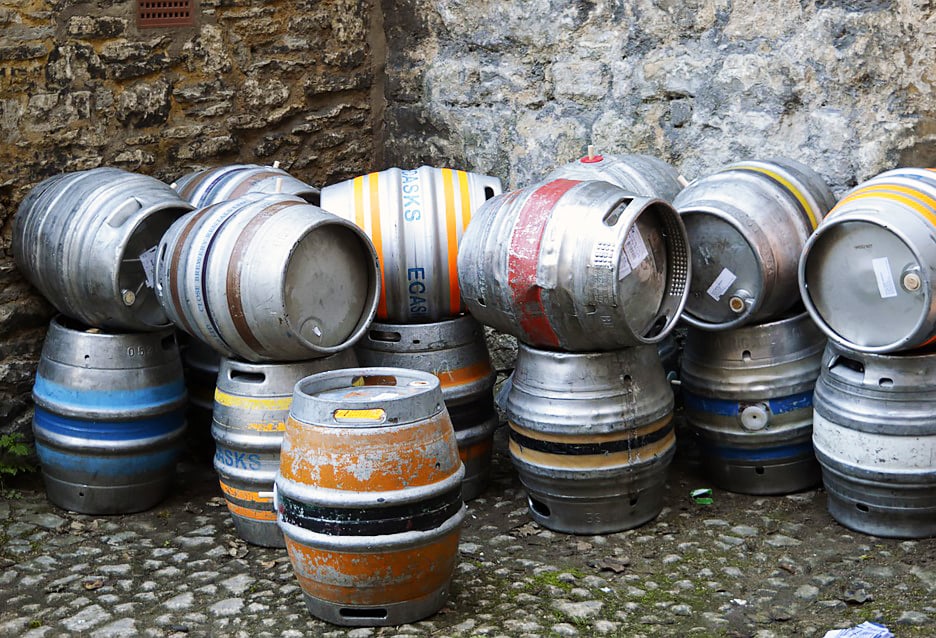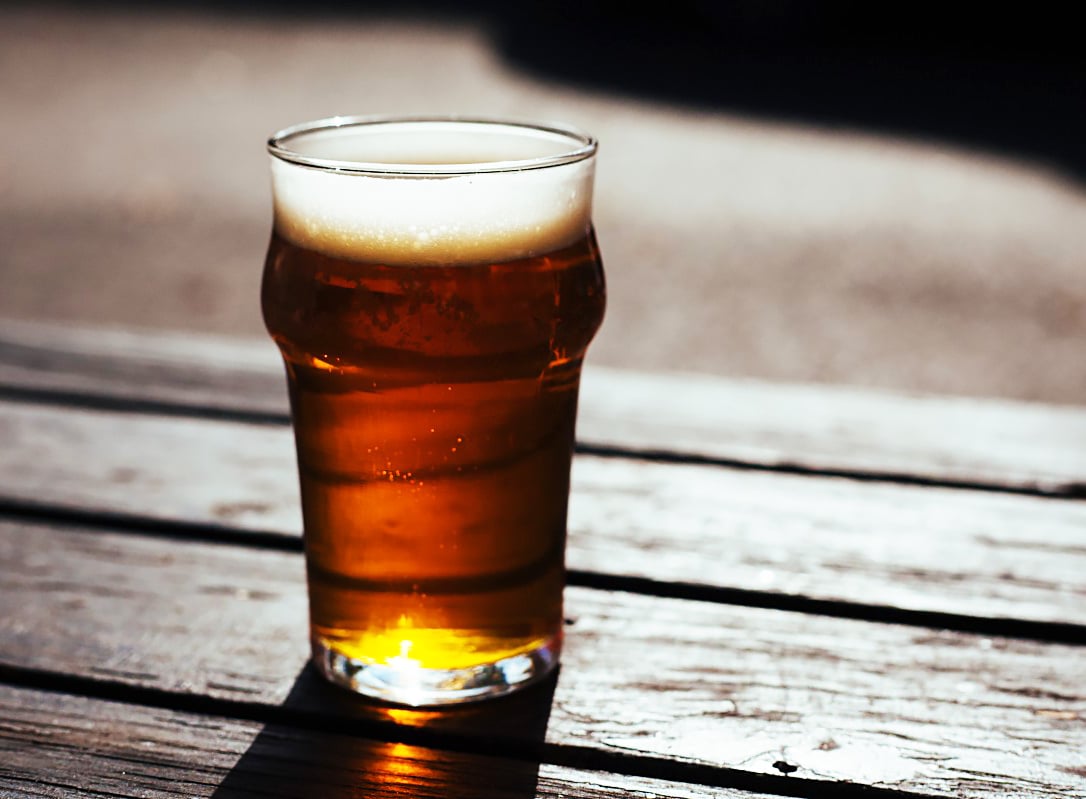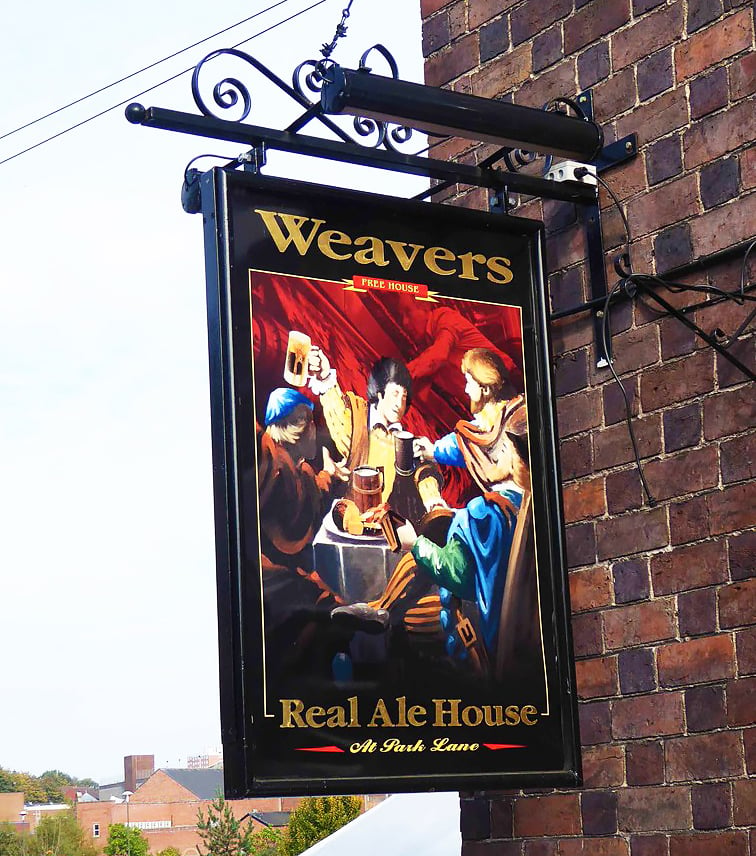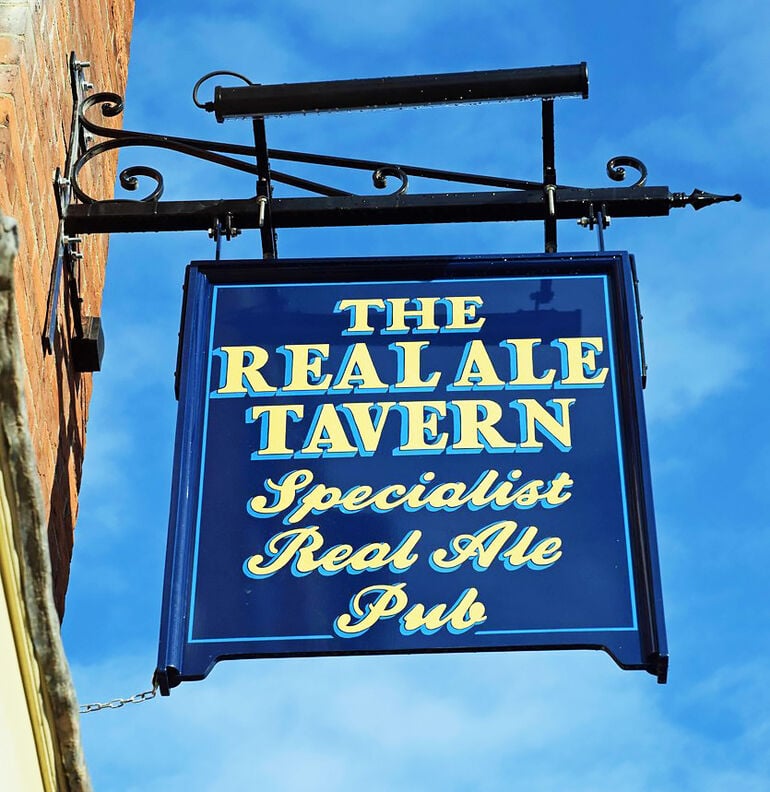Start 14-Day Trial Subscription
*No credit card required

What is Real Ale?
In traditional pubs in the U.K., patrons stroll up to the bar to select a beer. Along with offerings in bottles and cans, pubs will pour a range of draft lagers and ales. Most fine pubs will also showcase a row of peculiar, elongated, vertical tap handles that resemble billy clubs. These require the bartender to use a bit of muscle to pump the handle a couple of times to suction beer from the cellar up to the pint glass. These "hand-pulled" beers display colorful pump clip labels featuring eccentric names and artwork, and the unfiltered beer pours from a gooseneck spout with a soft, light CO2 sparkle. This quirky, historic English product is known as "real ale" or "cask ale."
Fizzy draft or keg beer is filtered and pumped full of pressurized carbon dioxide gas, but real ale breweries in the U.K. usually put unfiltered, uncarbonated ale into 10.8-gallon metal casks called "firkins." A hint of fermentable sugar and live yeast is included in the sealed firkin. Like a bottle of homebrew, the yeast consumes the residual sugar over a few days, producing a natural, subtle carbonation in the cask ale – making real ale a living product.
When the cask arrives at the pub, the cellar person places it in "stillage" position in the cool cellar. A cask in stillage is left horizontal and motionless for a couple of days, allowing the yeast to settle to the bottom and the beer to clarify. English casks are built with a "keystone" serving hole on one end and a larger opening in the center of the cask known as the "shive." Plastic or wooden shive and keystone bungs get hammered into both openings to seal up the cask ale. Before serving, the cellar person hammers a small wooden peg or "spile" into a depression in the shive bung to monitor the level of CO2 in the ale. Lively casks are allowed to bubble and vent through the wooden spile for a few minutes or hours until the real ale achieves the perfect level of delicate carbonation.
Despite persistent myths, English cask ale should never be served flat or warm. Pubs that respect real ale and take proper care of the product serve it at a cool, pleasant cellar temperature of 50-55 degrees F, and knowledgeable bartenders taste the beer at least twice a day to check its condition. Gentle carbonation, elegant fruity esters from cask-conditioning, and serving at cellar temperature make for a flavorful and satisfying pint of real ale.

Gentle carbonation, elegant fruity esters from cask-conditioning, and serving at cellar temperature make for a flavorful and satisfying pint of real ale.
Time travel back to England in the 1970s and real ale appeared to be on the brink of extinction. Large beer manufacturers purchased scores of smaller breweries, and extensive consolidation was the norm. Deciding that real ale was just too much of a bother, the national breweries began to produce and promote a range of bland, fizzy, heavily filtered, watery ales and lagers that were served on draft throughout the U.K. A small group of real ale aficionados finally had enough and formed the organization now known as the Campaign for Real Ale (CAMRA).
Widely considered one of the most successful and influential consumer groups in Europe, CAMRA invented the term "real ale" for cask-conditioned beer and demanded that traditional English cask ale return to pubs. After many years of crusading for promotion, publicity and consumer pressure, the big breweries acquiesced, and real ale experienced a triumphant resurgence that's still going on today.
CAMRA may have started out with a group of discontented friends in a pub, but today the powerful organization boasts almost 200,000 members. Over the years, CAMRA has succeeded in lowering beer taxes in the U.K., pushing through pub-friendly legislation and introducing new generations to the joys of real ale. CAMRA cask ale festivals take place year-round across the U.K., and the organization's flagship event is the massive Great British Beer Festival that's held each year in London with hundreds of cask ales and ciders on offer.
Hundreds of years ago, beers across Europe were mostly served in methods similar to cask ale, but England ranks as the only country that continues this idiosyncratic process. Despite its historic roots, real ale continues to evolve. In the first half of the 1900s, sessionable mild ales, English bitters, dark porters and the occasional malty old ale constituted the basic range of real ales available in most U.K. pubs. These days, real ale drinkers are blessed with choices ranging from golden ales with American hops, pale ales, fruit beers, sour ales, stouts, barleywines and even a few hazy/juicy IPAs. Many folks in the U.K. consider modern cask ale as the ultimate form of craft beer.

These days, real ale drinkers are blessed with a plethora of choices, and many folks in the U.K. consider modern cask ale as the ultimate form of craft beer.
Real ale does present challenges. Needing time to settle and vent, casks can't be delivered and served on the same day. Also, when a pint is pumped out of the cask, an equal volume of air enters through the small hole in the shive bung, and the resulting oxidation can limit the servable life of a cask to around 2-3 days. Many pubs now use a "cask breather" system that replaces beer volume in the cask with a light layer of protective carbon dioxide. After much debate over the years, CAMRA now endorses the use of cask breathers to extend the life of a pub's real ale.
Several brewers in America produce an occasional cask ale as a vessel for experimentation with creative ingredients such as wood chips, herbs, dry-hops, fruit, chocolate, coffee beans and other novelties that can be added directly to the firkin to pique the interest of modern craft beer geeks.
Without a traditional hand-pump cask tap, many breweries and pubs in the U.S. opt to place the cask on the bar in a horizontal wooden stillage cradle. A simple gravity tap is hammered into the keystone serving bung, the wooden spile peg is removed from the shive, and the beer is served in one day directly from the cask. The cask must be taken from stillage position in a cooler and placed gently on the bar stillage stand without disturbing the sediment. An insulating cask jacket can be used to keep the beer cool throughout the day of serving. Nothing is worse than a room temperature real ale.
Meanwhile, back in U.K. pubs, younger beer drinkers who have become enamored with trendy, American-style craft beers are drinking more draft/keg ales and lagers, and many old-school CAMRA members seem concerned that traditional real ale may soon be on the decline. Let's hope the U.K. finds a middle ground that allows for enjoyment of modern craft kegs yet preserves the fascinating tradition of cask-conditioned real ale.

Header and Footer Photo Courtesy PL Chadwick/geograph.org.uk



